I have always wanted to do a temperature quilt. I’ve also always wanted to host a quilt along. 2024 seemed like the right year to combine them both!! I hope that you join me in doing a 2024 Temperature Quilt Along!
What’s a temperature quilt?
A temperature quilt is a great way to randomly make a year long quilt with a range of colors. First you pick colors to represent increments of temperatures (either 10°, 6°, 5° increments, or whatever increments you decide). Then record the high and low temperatures of each day. Then each day you sew a couple of blocks together. By the end of the year you have a quilt! It really is that simple.
First things first
There are of course some choices you need to make, which is why I’m announcing my 2024 QAL in November! First think of what city you want to represent in your quilt. It doesn’t have to be where you live. It can be your current hometown. Your childhood hometown. Or just somewhere in the world you have always wanted to visit or live!
Once you have decided on the location you want to use for your quilt, find out the highs and lows for the previous year for your location. I went the nerdy route and looked up the information for three different cities, including NYC for the year I was born! The other two cities I looked up were San Juan, Puerto Rico and Orlando, Florida. I wanted to give you all an idea of how to separate your degree increments.
For the historical NYC temperatures, I downloaded the data from NOAA here. For basic data the best way is to go to the Time and Date website. There you can hover on the Weather tab and click on Past Week. Then from the drop down that says Past 2 Weeks, you can choose any month in the last year or two. This should help you get an idea of the highest and lowest temperature for your location.
Choosing your increments
After you find the range of temperatures for your chosen city is for a year, then you can decide how many temperatures you want to assign to one color/fabric.
At first I chose 10° increments for the three cities I looked up. I did this in Excel just to get a feel for how it would work. As you can see, 10° increments in NYC made more sense than in Orlando or San Juan.
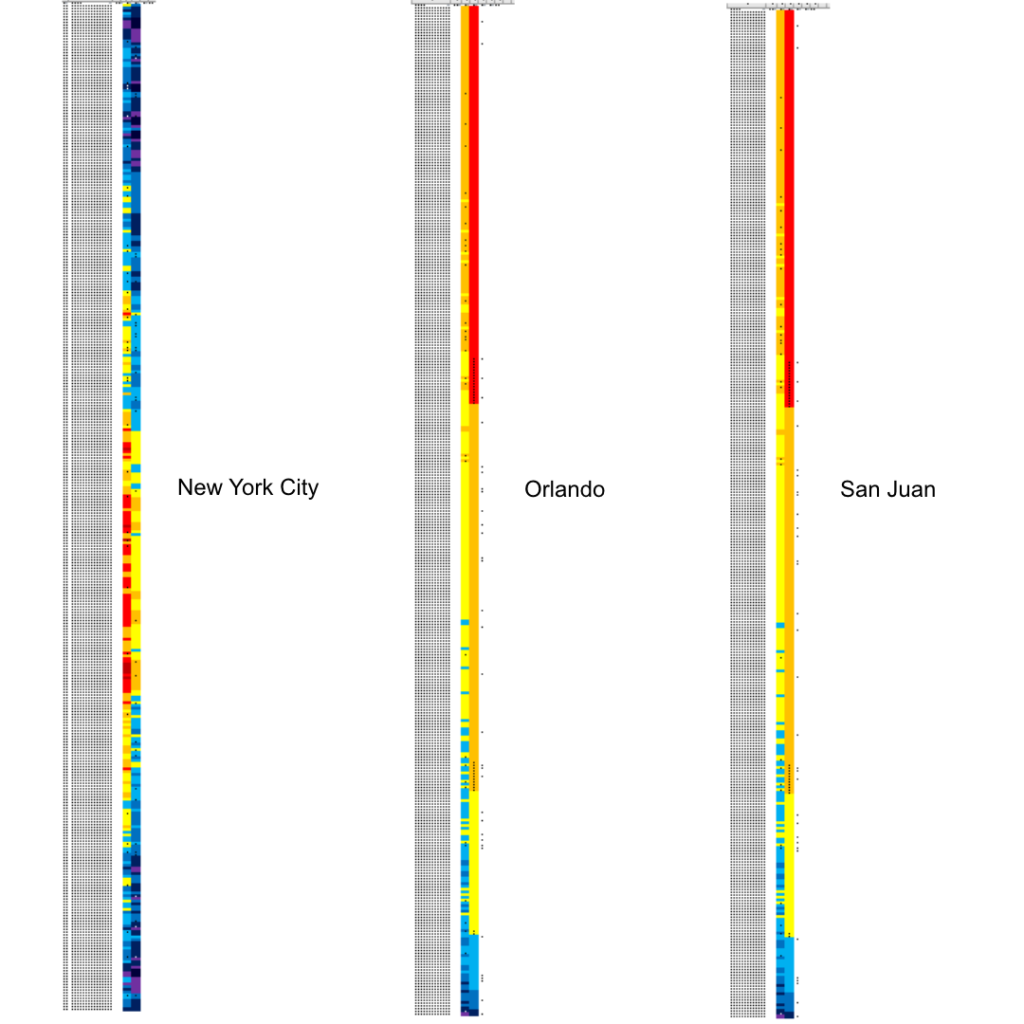
In doing research for our QAL, I found that a majority of quilters choose about 10 to 15 different fabric choices for their temperature quilts. Remember, this is just one idea. This is YOUR quilt. Even though we are going to be doing this together throughout the year, this quilt is all yours to have fun with and design!
Choosing your design
Speaking of designs, once you have decided your degree increments, now it’s time to figure out what kind of quilt you want to make! There are so many different patterns/options/ideas for making a temperature quilt.
There are just some ideas/examples I came up with. If you go to Pinterest or Google and look up temperature quilts, you can find so many different options, or come up with one of your own!
Half Square Triangle Quilts
HSTs are a great way to make a temperature quilt! You can just do a straight HST quilt where the bottom triangle is the low for the day and the top triangle is the high for the day. I have seen where people were turning the HST depending on if the high/low was within normal historical temperatures for that day, or if it was a new high or a new low they turned the block a different way. Or even used generic colors for borders or corners. But you don’t have to make this complicated at all!
Here’s an example of NYC temps divided by 5 degree increments for the year I was born in a simple HST quilt. I did the days going horizontally, with a gray square to show the end of a month. February in my examples has 29 days (I just doubled February 28th), since next year is a leap year and I wanted to see how 2024 would look.
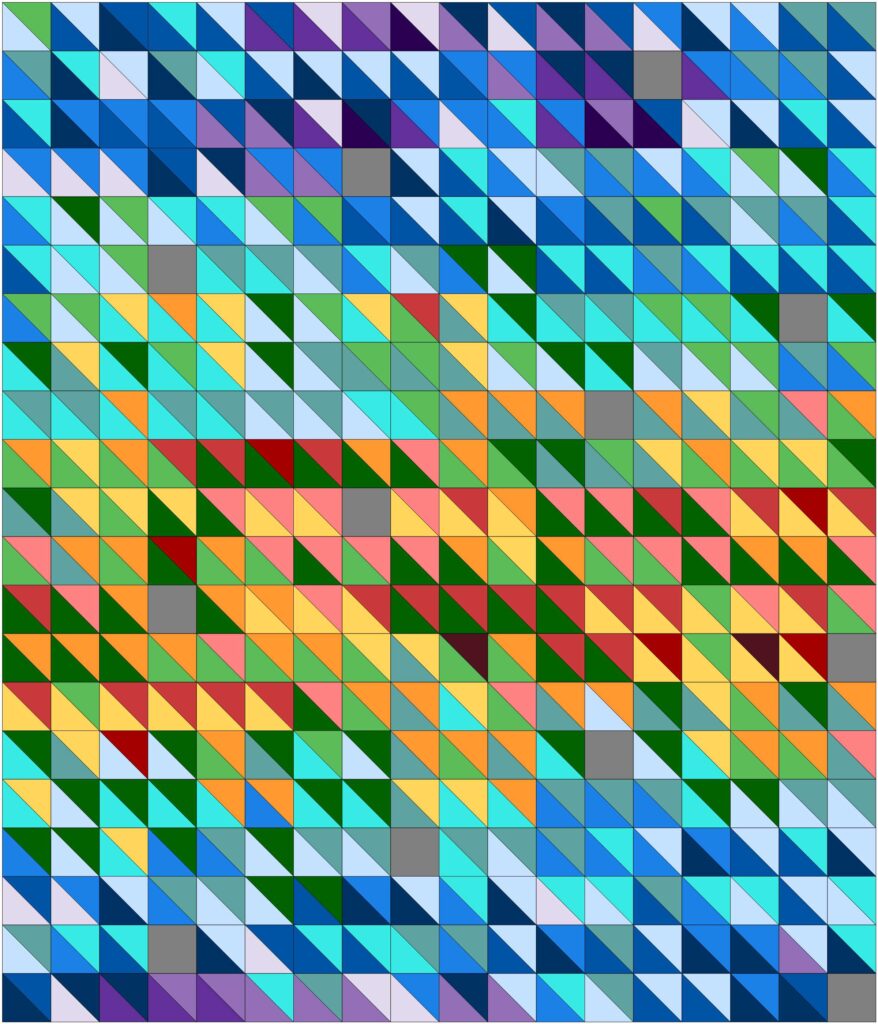
English Paper Pieced Hexagons
There are quite a few ways to make a temperature quilt with English Paper Piecing. The example below is just one idea. I did this one with the 2022 data from Orlando in 5° increments. Each month is in a column, with a gray background color for in between the months. The higher hexie is the high for the day and the lower one is the low temperature, with the direction of the higher/lower hexie changing for each month. I just threw this together in EQ8 as an example so please excuse any errors.
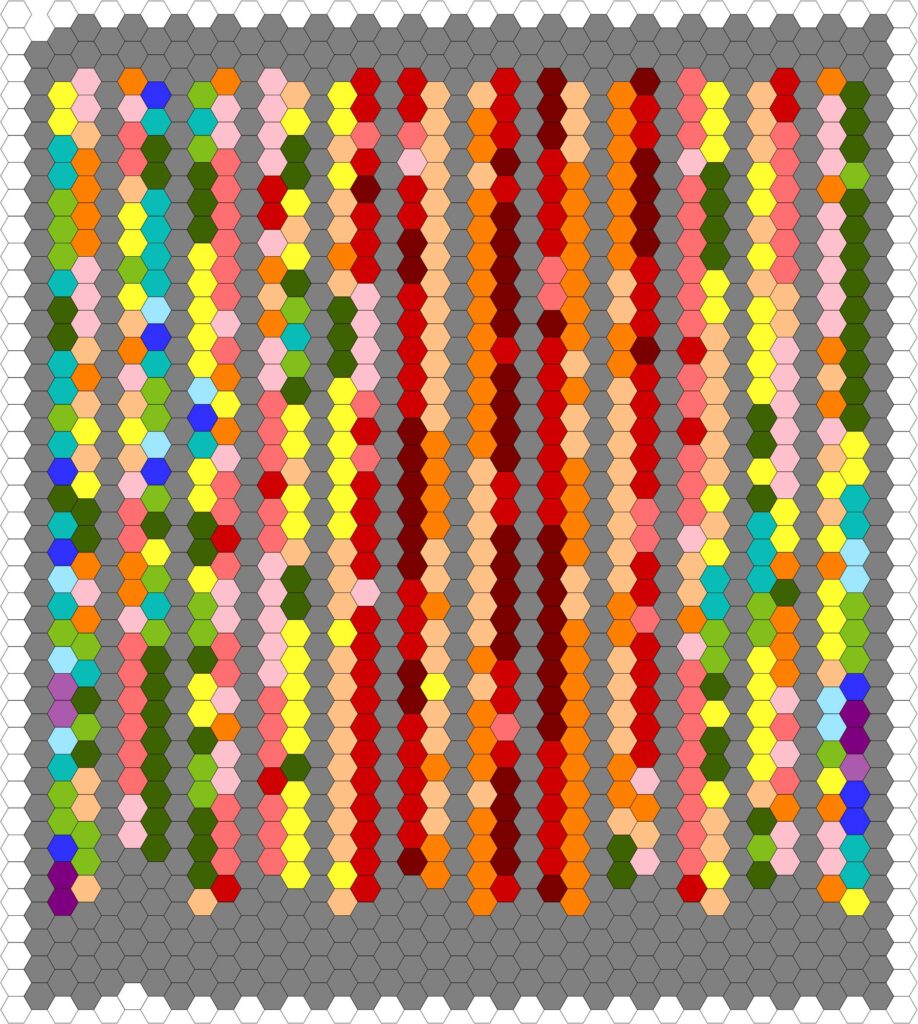
Orange Peels
I might make this one! I have always wanted to make orange peels, and thought this would be a fun way to slowly make an orange peel quilt. Hopefully, my blocks will look better the further along in the year we go!
The background fabric for each peel represents the low temperature for the day, with the peel itself representing the high temperature. I designed this one also with the days going horizontally and using a generic gray color for peel and white for the background on the squares that are splitting up the months.
For this example I used the NYC data I had with 10° increments. I might like it more if I did smaller increments and used more fabrics.
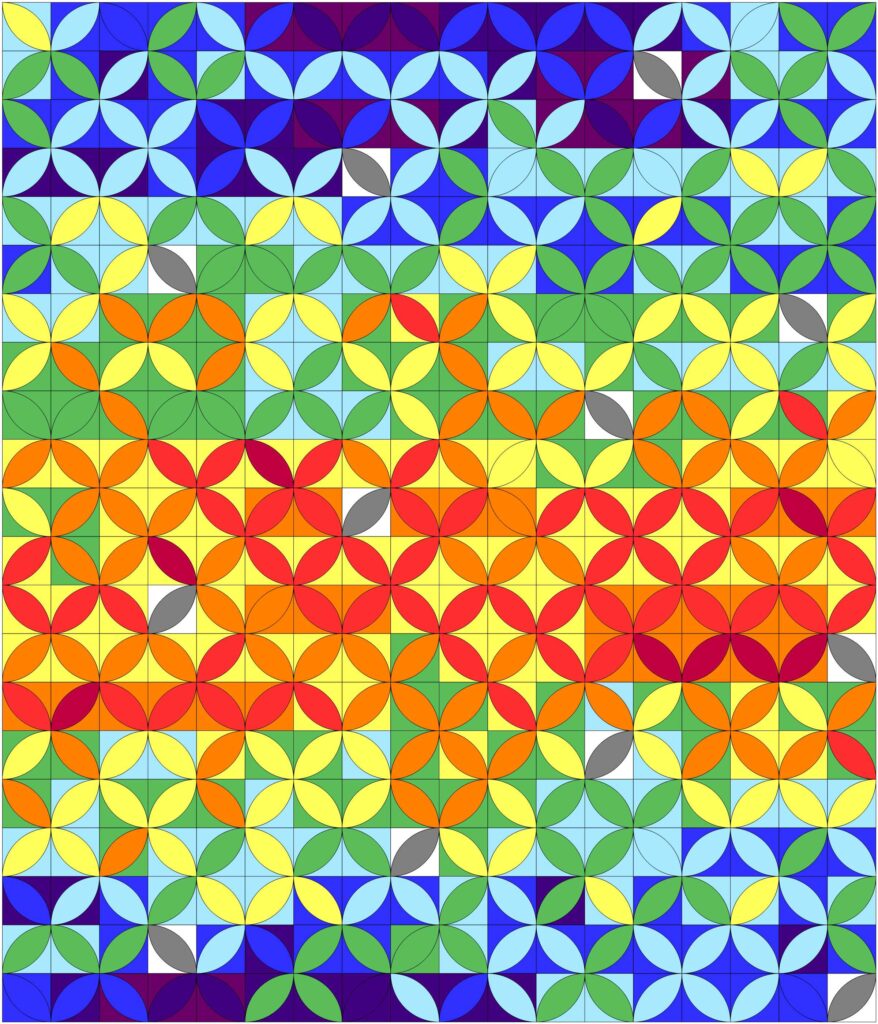
Circles in Squares
This pattern is another where the days go vertically and the months are separated into columns. The background fabric of each square is the low temperature for the day, and the circle on top is the high temperature for the day. For this example, I did circles and used the San Juan data I had for 2022, in 3° increments. I wanted to show you that even with a location that has very little fluctuation in temperatures, you can still make a beautiful quilt!
You can also take this idea and instead of a circle in a square, make them squares in squares.
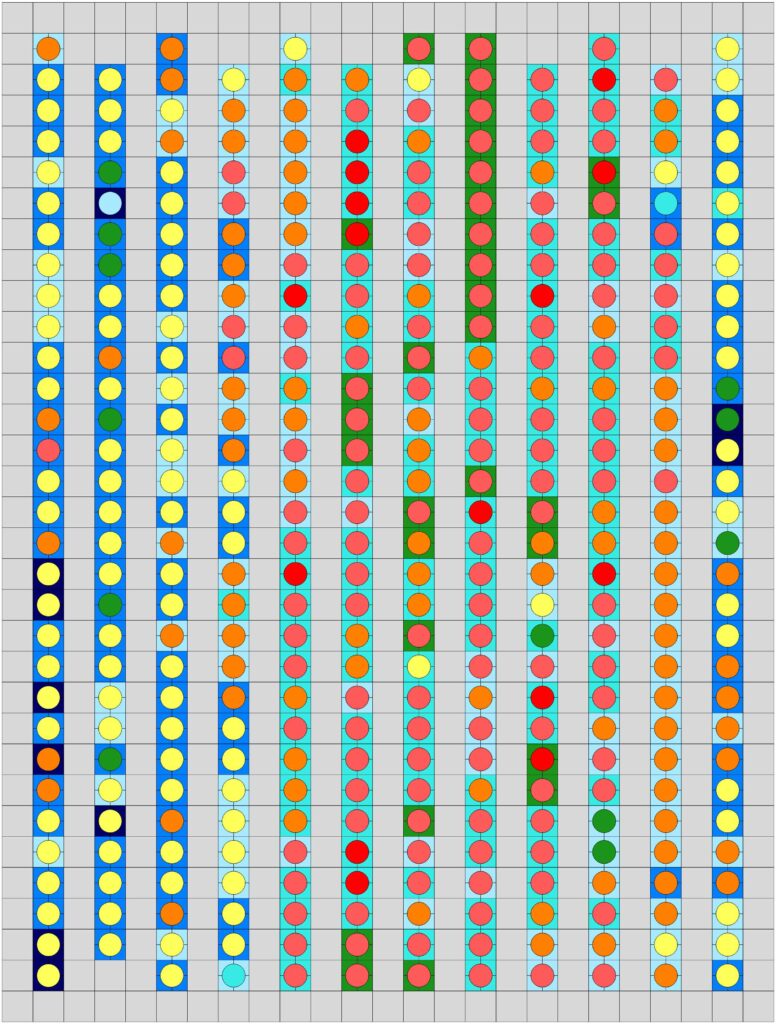
Choosing your fabrics
As quilters we know there are SO MANY FABRIC CHOICES!! So I think this is going to be the hardest part, well at least for me!
Count up the number of degree increments you have and that’s how many fabrics you’ll need. I would suggest also choosing two additional colors/fabrics. One for any temperature that falls below what you have as the lowest temp on your chart, and one for any temperature that falls above what you have as the highest temp on your chart. This way if you have a record breaking high or low during the year, it will show up differently on your quilt.
I haven’t decided if I’m going to go with solids or not for this QAL. You can definitely use fabrics that you already have in your stash!
Quilt Planner Download
I made up a PDF that will help you plan your temperature quilt! It has a place for you to write down your temperature increments and attach the corresponding fabric choice. It also has a place for you to record the low/high temperatures for each day of the year for 2024! Click here to download your temperature quilt planner!
I hope that you’ll join me throughout the year with check-ins on social media, or on the blog with your progress! I’ll share my progress in fabric selection in the coming weeks. And I’ll post a reminder sometime in December.
I’m really looking forward to making this temperature quilt for 2024! I know that a year long project may seem like a huge undertaking, but it reminds me of the saying that you eat an elephant one bite at a time! This quilt is literally just one day at a time!
I hope you will make a temperature quilt with me. Please contact me if you have questions!
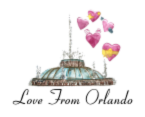
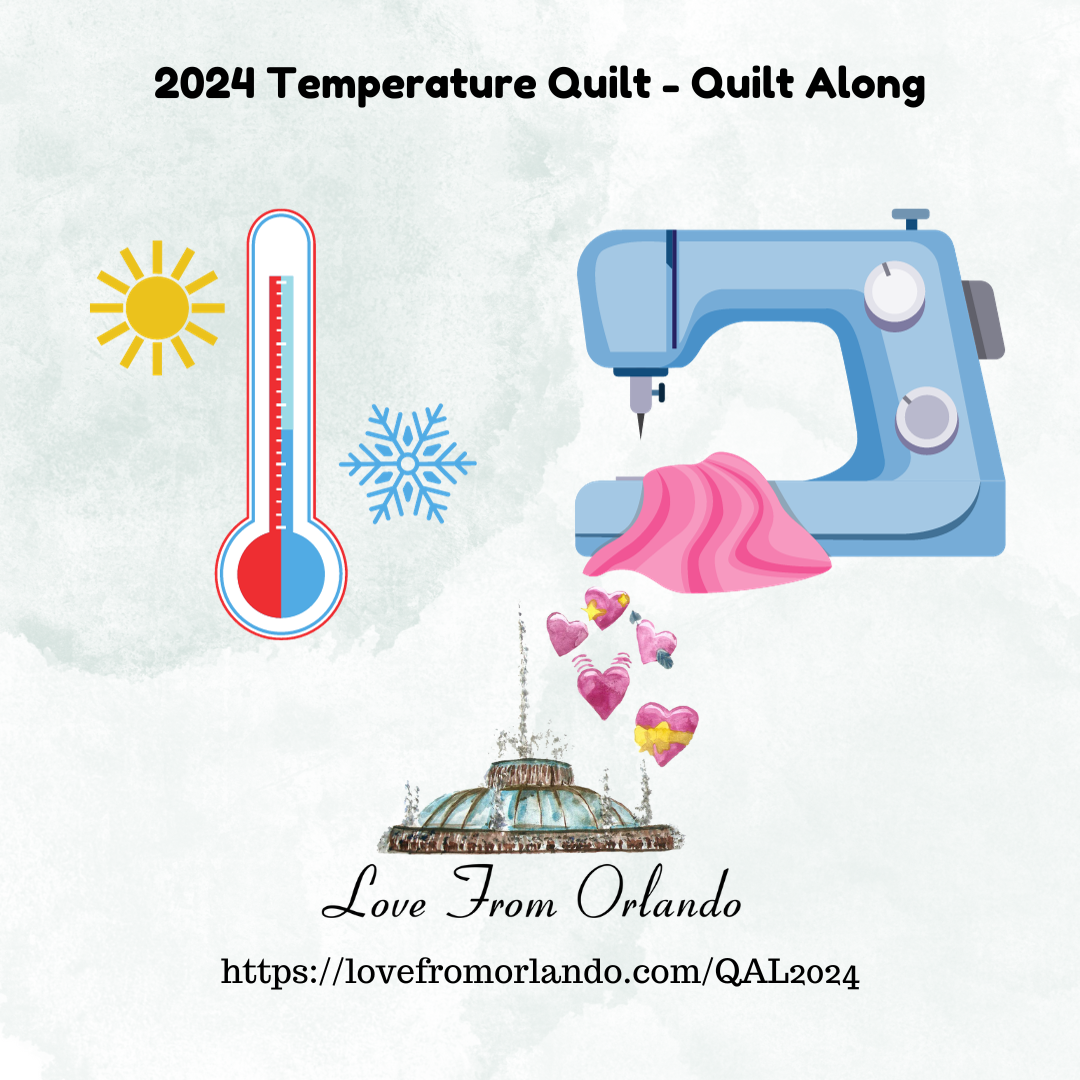


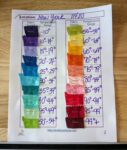
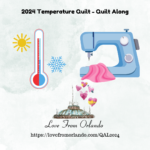


In process of working on my first temperature quilt this year. Doing it in HST pattern and its big because my squares are 4 1/2 but looking forward to doing 2024.
I made the HSTs in my example 3 x 3 inches, so the total quilt without any borders would be about 54 x 63. I still haven’t decided on which way I’m making mine for 2024!!
definitely would love to do this QAL!
Yay! This is going to be fun!
Maybe I can keep up!
Let’s think positively!! You can do it and we’ll encourage each other along the way!
Yes! I want to be a part of this QAL!
I’m so excited you’ll join me!
I’ll be joining the QAL! I can’t wait to get started.
Yay!! I’m so excited that you’ll be joining us!